Whether you’re a seasoned gardener or a beginner looking to expand your autumn harvest, this guide will provide you with the information you need to cultivate a bountiful and delicious fall garden. So, get ready to discover the incredible world of fall garden vegetable crops!
Arugula
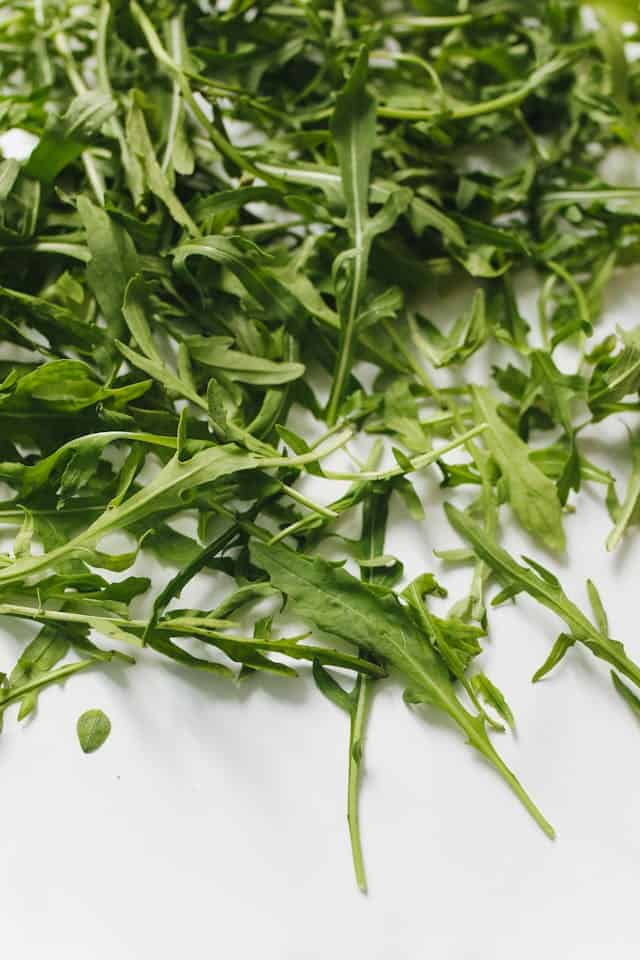
Arugula, also known as rocket or rucola, is a peppery, leafy green that thrives in the cooler temperatures of fall. This nutrient-dense vegetable is a fantastic addition to any fall garden, as it can be harvested repeatedly throughout the season.
Arugula is rich in vitamins A, C, and K, as well as minerals like calcium, iron, and potassium. Its distinctive, slightly bitter flavor pairs beautifully with milder greens in salads, or it can be enjoyed on its own as a flavorful side dish. Arugula is also incredibly versatile, as it can be used in pesto, added to pasta dishes, or even blended into smoothies. For best results, sow arugula seeds directly in the garden in late summer or early fall, and enjoy its fresh, peppery taste well into the autumn months.
Beets
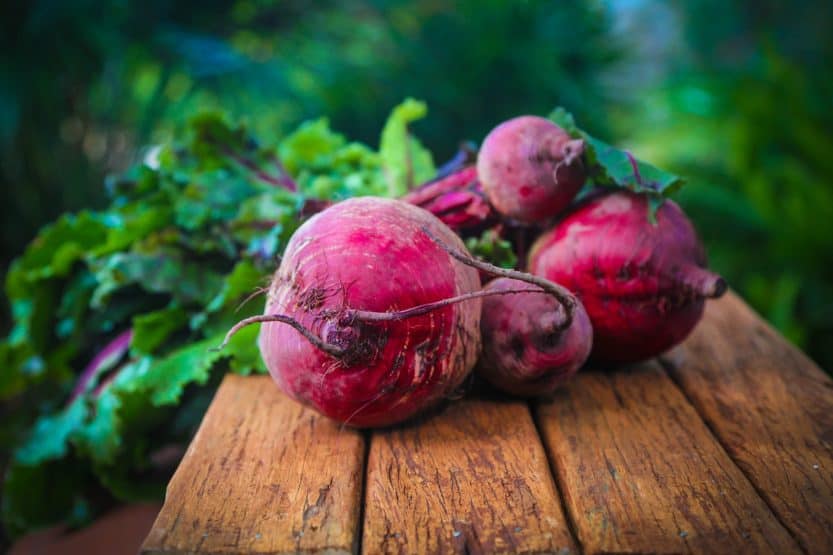
Beets are a true fall garden superstar, as they thrive in the cooler weather and can even tolerate light frosts. This vibrant root vegetable comes in a variety of colors, including classic deep red, golden yellow, and even rainbow-hued varieties.
Beets are packed with essential vitamins and minerals, such as folate, manganese, and potassium. They also contain betalains, which are powerful antioxidants that may offer numerous health benefits. Beets can be roasted, boiled, or even enjoyed raw in salads. Their earthy, slightly sweet flavor pairs well with a variety of seasonings and can be used in both savory and sweet dishes. When growing beets in the fall garden, be sure to sow the seeds in late summer for a bountiful harvest as the weather cools.
Bok Choy

Bok choy, also known as Chinese cabbage, is a versatile and nutritious fall garden crop. This leafy green vegetable is prized for its tender, succulent stems and flavorful leaves. Bok choy is an excellent source of vitamins A, C, and K, as well as minerals like calcium, iron, and potassium. It has a mild, slightly sweet flavor that makes it a perfect addition to stir-fries, soups, and salads.
Bok choy thrives in the cooler temperatures of autumn and can even tolerate light frosts. To grow bok choy in your fall garden, sow the seeds in late summer or early fall, and be sure to provide the plants with plenty of moisture and well-draining soil. With its impressive nutritional profile and versatile culinary uses, bok choy is a must-have for any fall gardener.
Broccoli
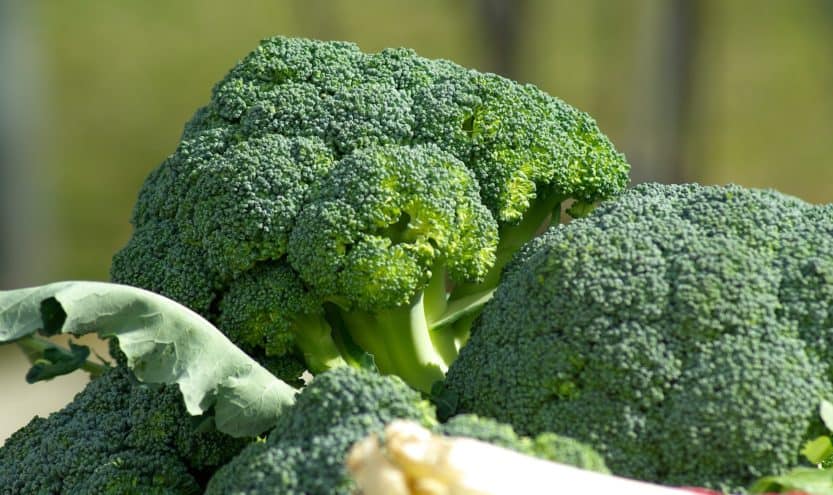
Broccoli is a cool-weather champion that truly shines in the fall garden. This nutrient-dense vegetable is packed with vitamins, minerals, and antioxidants that make it a powerhouse of health. Broccoli is rich in vitamins C and K, as well as folate and fiber. It also contains sulforaphane, a compound that may have cancer-fighting properties.
In the fall garden, broccoli thrives in the mild temperatures and can even tolerate light frosts. When growing broccoli, be sure to plant the seeds or transplants in late summer for a bountiful harvest in the autumn months. The compact heads of broccoli are incredibly versatile, lending themselves well to roasting, steaming, or even enjoying raw in salads. With its impressive nutritional profile and delicious flavor, broccoli is a must-have for any fall vegetable garden.
Brussels Sprouts

Brussels sprouts are a quintessential fall crop that deserve a spot in every autumn garden. These miniature cabbages are not only visually stunning, but they are also packed with essential vitamins, minerals, and antioxidants. Brussels sprouts are an excellent source of vitamins K and C, as well as fiber and folate. They also contain glucosinolates, which are compounds that may have anti-cancer properties. In the fall garden,
Brussels sprouts thrive in the cooler temperatures and can even tolerate light frosts. To grow these delectable veggies, plant the seeds or transplants in late summer, and be sure to provide them with well-draining soil and ample space to grow. When harvested at their peak, Brussels sprouts have a delightfully nutty, slightly sweet flavor that pairs beautifully with a variety of seasonings and cooking methods, from roasting to sautéing.
Cabbage
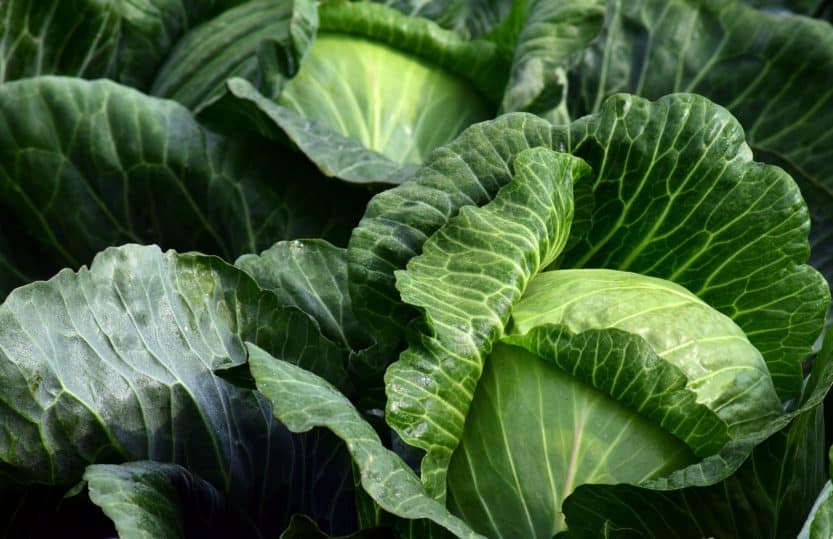
Cabbage is a hardy, cool-weather vegetable that is a must-have for any fall garden. This versatile crop comes in a variety of shapes, sizes, and colors, from the classic green heads to the vibrant red and purple varieties. Cabbage is an excellent source of vitamins C and K, as well as fiber and antioxidants. It also contains glucosinolates, which may have anti-inflammatory and cancer-fighting properties. In the fall garden, cabbage thrives in the mild temperatures and can even tolerate light frosts.
To grow cabbage successfully, plant the seeds or transplants in late summer, and be sure to provide the plants with well-draining soil and ample space to grow. Cabbage can be enjoyed in a variety of ways, from raw in salads to cooked in soups, stews, and slaws. With its impressive nutritional profile and versatile culinary uses, cabbage is a must-have for any fall gardener.
Carrots
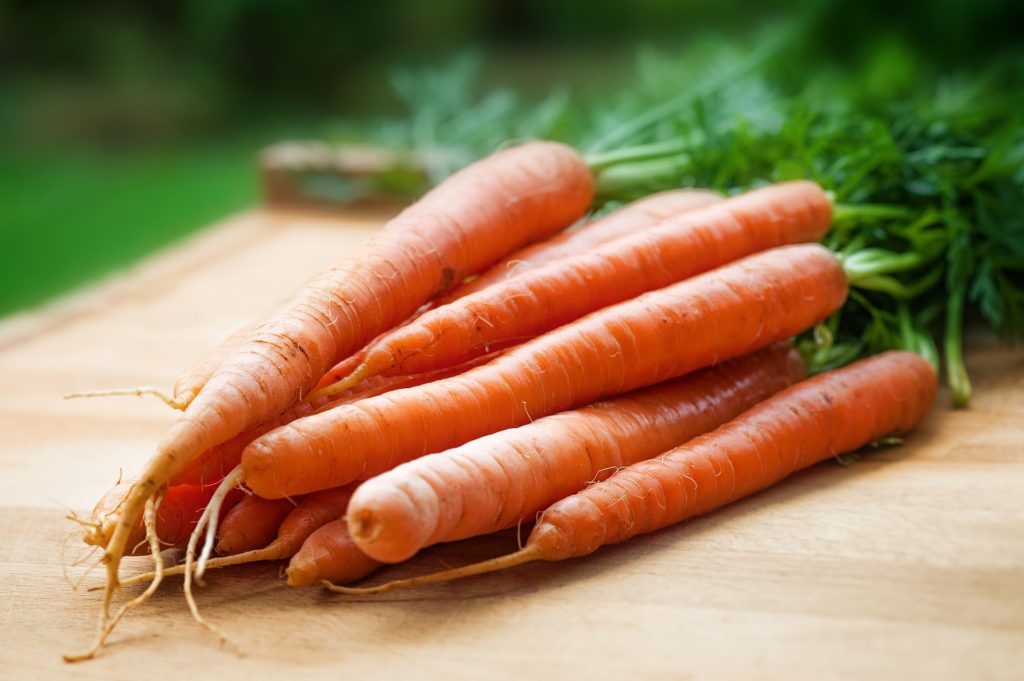
Carrots are a classic fall garden staple, thriving in the cooler temperatures and shorter days of the autumn season. This vibrant root vegetable is not only delicious but also packed with essential vitamins and minerals. Carrots are an excellent source of beta-carotene, which the body converts into vitamin A, a nutrient crucial for eye health and immune function. They also contain vitamins C and K, as well as fiber and antioxidants.
In the fall garden, carrots can be sown directly in the ground in late summer or early fall, and they will continue to grow and develop their signature sweet, earthy flavor as the weather cools. Carrots come in a variety of colors, from the traditional orange to vibrant purple, yellow, and even white varieties. Whether roasted, steamed, or enjoyed raw, carrots are a versatile and nutritious addition to any fall harvest.
Cauliflower
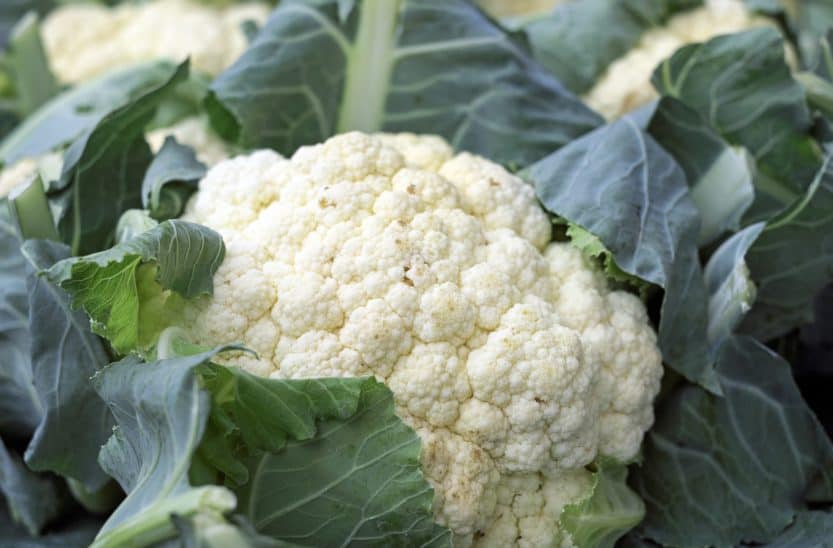
Cauliflower is a cool-weather champion that thrives in the fall garden. This member of the brassica family is not only visually stunning, but it is also packed with essential vitamins, minerals, and antioxidants. Cauliflower is an excellent source of vitamins C and K, as well as folate and fiber. It also contains glucosinolates, which are compounds that may have anti-cancer properties.
In the fall garden, cauliflower can tolerate light frosts and will continue to grow and develop its signature creamy white heads as the temperatures drop. To grow cauliflower successfully, plant the seeds or transplants in late summer, and be sure to provide the plants with well-draining soil and ample space. Cauliflower is incredibly versatile in the kitchen, lending itself well to roasting, steaming, or even enjoying raw in salads and crudité platters. With its impressive nutritional profile and delicious flavor, cauliflower is a must-have for any fall gardener.
Celery

Celery is a often-overlooked fall garden gem, but this crunchy, flavorful vegetable deserves a spot in every autumn harvest. While celery is typically associated with warmer weather, it actually thrives in the cooler temperatures of the fall season.
Celery is an excellent source of vitamins A, C, and K, as well as minerals like potassium and folate. It also contains compounds called phthalides, which may help to lower blood pressure and improve heart health. In the fall garden, celery can be sown directly in the ground in late summer or early fall, and it will continue to grow and develop its signature crisp stalks as the weather cools. Celery is incredibly versatile in the kitchen, lending itself well to soups, stews, salads, and even as a healthy snack on its own. With its impressive nutritional profile and unique flavor, celery is a must-have for any fall gardener.
Chard
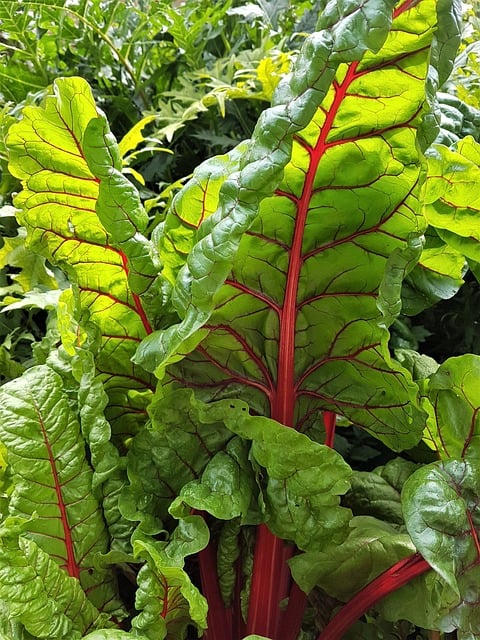
Chard is a vibrant, nutrient-dense vegetable that thrives in the cool, crisp weather of the fall season. Also known as Swiss chard, this leafy green is prized for its colorful stems and large, tender leaves. Chard is an excellent source of vitamins A, C, and K, as well as minerals like magnesium, potassium, and iron. It also contains betalains, which are powerful antioxidants that may offer numerous health benefits. In the fall garden, chard can tolerate light frosts and will continue to grow and produce a bountiful harvest well into the cooler months.
To grow chard successfully, sow the seeds directly in the ground in late summer or early fall, and be sure to provide the plants with well-draining soil and ample space. Chard’s versatility in the kitchen is unparalleled, as its leaves can be sautéed, added to soups and stews, or even enjoyed raw in salads. With its vibrant colors, impressive nutritional profile, and delicious flavor, chard is a must-have for any fall gardener.
Cilantro

Cilantro is a fragrant, flavorful herb that thrives in the cooler temperatures of the fall season. Also known as coriander, this versatile plant is prized for its fresh, slightly citrusy leaves, as well as its aromatic seeds. Cilantro is an excellent source of vitamins A, C, and K, as well as minerals like iron and magnesium. It also contains compounds called aldehydes, which may have anti-inflammatory and antimicrobial properties.
In the fall garden, cilantro can be sown directly in the ground in late summer or early fall, and it will continue to grow and produce a bountiful harvest as the weather cools. Cilantro’s distinctive flavor pairs beautifully with a variety of dishes, from Mexican-inspired cuisine to Asian-inspired stir-fries. Whether used fresh or dried, cilantro is a must-have for any fall gardener who loves to infuse their dishes with bold, herbal notes.
Collard Greens
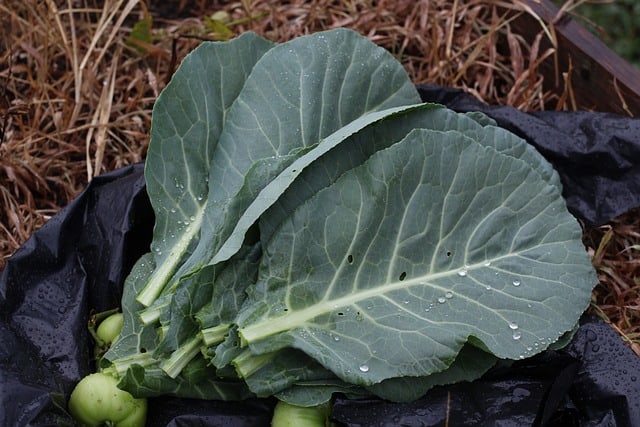
Collard greens are a hardy, nutrient-dense vegetable that thrives in the cool, crisp weather of the fall season. This member of the brassica family is prized for its large, sturdy leaves and its impressive nutritional profile. Collard greens are an excellent source of vitamins A, C, and K, as well as minerals like calcium, iron, and magnesium. They also contain glucosinolates, which are compounds that may have anti-cancer properties. In the fall garden, collard greens can tolerate light frosts and will continue to grow and produce a bountiful harvest well into the cooler months.
To grow collard greens successfully, sow the seeds directly in the ground in late summer or early fall, and be sure to provide the plants with well-draining soil and ample space. Collard greens are incredibly versatile in the kitchen, lending themselves well to sautéing, braising, or even enjoying raw in salads. With their impressive nutritional profile and delicious flavor, collard greens are a must-have for any fall gardener.
Cress

Cress is a delightful, peppery green that thrives in the cool, crisp weather of the fall season. Also known as watercress, this nutrient-dense vegetable is prized for its vibrant, spoon-shaped leaves and its unique, slightly pungent flavor. Cress is an excellent source of vitamins A, C, and K, as well as minerals like calcium, iron, and magnesium. It also contains glucosinolates, which are compounds that may have anti-cancer properties.
In the fall garden, cress can be sown directly in the ground in late summer or early fall, and it will continue to grow and produce a bountiful harvest as the temperatures drop. Cress is incredibly versatile in the kitchen, lending itself well to salads, sandwiches, and even as a garnish for soups and stews. With its impressive nutritional profile and bold, flavorful taste, cress is a must-have for any fall gardener who loves to experiment with unique and delicious greens.
Garlic
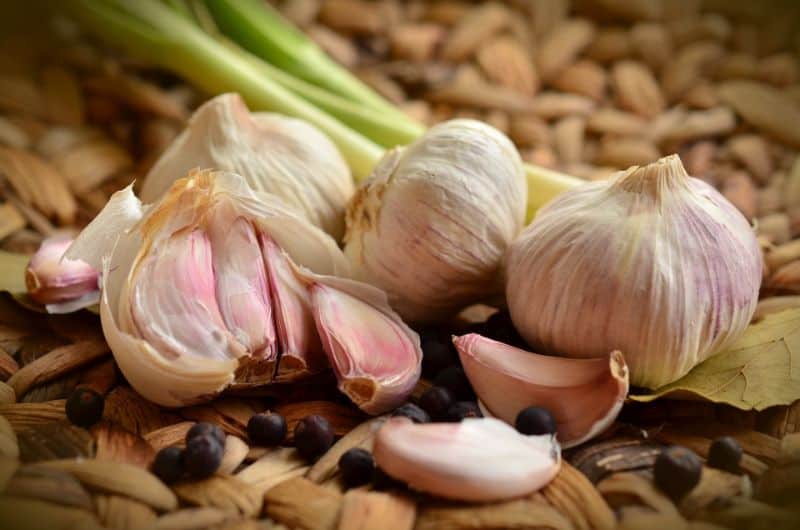
Garlic is a fall garden staple that not only adds incredible flavor to a wide range of dishes but also offers numerous health benefits. This pungent, aromatic bulb is an excellent source of vitamins C and B6, as well as minerals like manganese and selenium. Garlic also contains compounds called allicin, which may have anti-inflammatory and antimicrobial properties. In the fall garden, garlic thrives in the cooler temperatures and can even tolerate light frosts.
To grow garlic successfully, plant the cloves in the ground in the fall, and be sure to provide them with well-draining soil and ample space. As the weather cools, the garlic will continue to develop its signature flavor and aroma, resulting in a bountiful harvest that can be used fresh or preserved for later use. Whether roasted, sautéed, or added to soups and stews, garlic is a versatile and indispensable ingredient in any fall kitchen.
Green Beans

Green beans are a classic fall garden crop that offer a delicious and nutritious addition to any autumn harvest. Also known as string beans or snap beans, these tender, crunchy veggies are packed with essential vitamins, minerals, and antioxidants.
Green beans are an excellent source of vitamins C and K, as well as fiber and folate. They also contain compounds called flavonoids, which may have anti-inflammatory and anti-cancer properties. In the fall garden, green beans thrive in the mild temperatures and can even tolerate light frosts. To grow green beans successfully, sow the seeds directly in the ground in late summer or early fall, and be sure to provide the plants with well-draining soil and ample support for their climbing vines. Whether steamed, sautéed, or enjoyed raw in salads, green beans are a versatile and delicious addition to any fall meal.
Kale
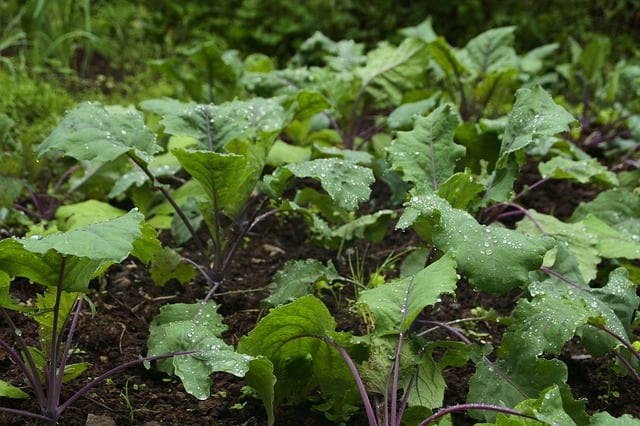
Kale is a true superstar of the fall garden, thriving in the cooler temperatures and shorter days of the autumn season. This nutrient-dense, leafy green is packed with essential vitamins, minerals, and antioxidants that make it a must-have for any health-conscious gardener.
Kale is an excellent source of vitamins A, C, and K, as well as minerals like calcium, iron, and magnesium. It also contains compounds called glucosinolates, which may have anti-cancer properties. In the fall garden, kale can tolerate light frosts and will continue to grow and produce a bountiful harvest well into the cooler months. To grow kale successfully, sow the seeds directly in the ground in late summer or early fall, and be sure to provide the plants with well-draining soil and ample space.
Kale’s versatility in the kitchen is unparalleled, as its nutrient-dense leaves can be enjoyed raw in salads, sautéed as a side dish, or even blended into smoothies. With its impressive nutritional profile and delicious, earthy flavor, kale is a true autumn superstar.
Kohlrabi

Kohlrabi is a unique and often overlooked fall garden vegetable that deserves a place in every autumn harvest. This member of the brassica family is prized for its distinctive, bulbous stem and its crisp, juicy texture.
Kohlrabi is an excellent source of vitamins C and K, as well as minerals like potassium and copper. It also contains compounds called glucosinolates, which may have anti-cancer properties. In the fall garden, kohlrabi thrives in the cool, crisp weather and can even tolerate light frosts. To grow kohlrabi successfully, sow the seeds directly in the ground in late summer or early fall, and be sure to provide the plants with well-draining soil and ample space.
Kohlrabi’s unique flavor and texture make it a versatile ingredient in the kitchen, as it can be enjoyed raw in salads, roasted as a side dish, or even added to soups and stews. With its impressive nutritional profile and its ability to thrive in the fall garden, kohlrabi is a hidden gem that every gardener should consider adding to their autumn harvest.
Leeks
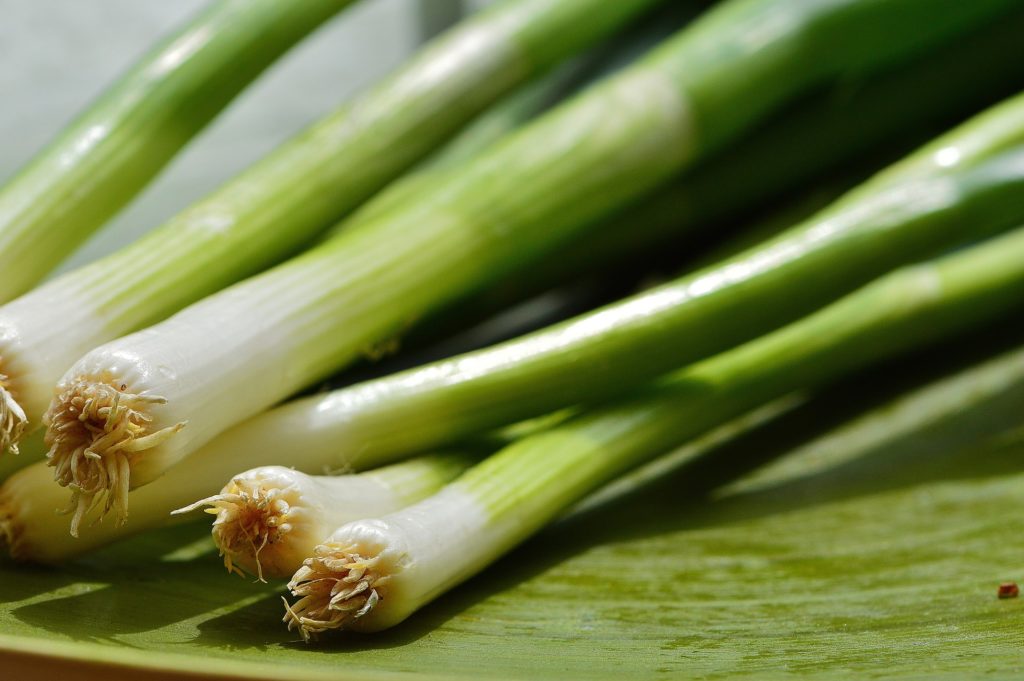
Leeks are a fall garden staple that offer a delicate, onion-like flavor and a wealth of essential nutrients. This member of the allium family is an excellent source of vitamins A, C, and K, as well as minerals like manganese and iron. Leeks also contain compounds called allicin, which may have anti-inflammatory and antimicrobial properties. In the fall garden, leeks thrive in the cooler temperatures and can even tolerate light frosts.
To grow leeks successfully, plant the seedlings or transplants in the ground in late summer or early fall, and be sure to provide them with well-draining soil and ample space to develop their signature long, slender stalks. Leeks are incredibly versatile in the kitchen, lending themselves well to soups, stews, and even roasted as a side dish. With their unique flavor profile and impressive nutritional benefits, leeks are a must-have for any fall gardener who loves to experiment with new and exciting vegetables.
Lettuce
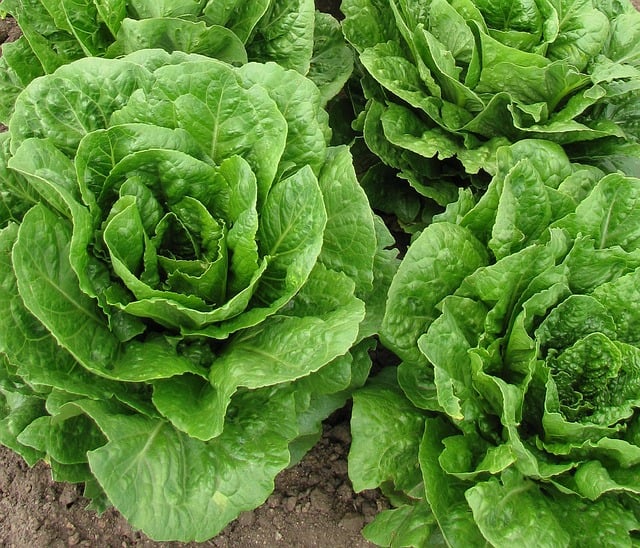
Lettuce is a versatile and nutrient-dense vegetable that thrives in the cool, crisp weather of the fall season. From crisp romaine to delicate butterhead varieties, lettuce offers a wide range of flavors and textures that can elevate any autumn salad or sandwich. Lettuce is an excellent source of vitamins A, C, and K, as well as minerals like iron and calcium. It also contains compounds called carotenoids, which may have antioxidant properties and support eye health.
In the fall garden, lettuce can be sown directly in the ground in late summer or early fall, and it will continue to grow and produce a bountiful harvest as the temperatures drop. To ensure a successful lettuce crop, be sure to provide the plants with well-draining soil and ample space, and protect them from any unexpected frosts or freezes. Whether enjoyed raw, sautéed, or even grilled, lettuce is a versatile and nutritious addition to any fall gardener’s harvest.
Mustard Greens

Mustard greens are a bold and flavorful addition to the fall garden, offering a unique and peppery taste that can liven up any dish. This member of the brassica family is packed with essential vitamins, minerals, and antioxidants, making it a nutritional powerhouse. Mustard greens are an excellent source of vitamins A, C, and K, as well as minerals like calcium, iron, and magnesium. They also contain glucosinolates, which are compounds that may have anti-cancer properties. In the fall garden, mustard greens thrive in the cooler temperatures and can even tolerate light frosts.
To grow mustard greens successfully, sow the seeds directly in the ground in late summer or early fall, and be sure to provide the plants with well-draining soil and ample space. Whether sautéed, added to soups and stews, or enjoyed raw in salads, mustard greens offer a delightful and nutritious way to spice up any autumn meal.
Onions and Scallions

Onions and scallions are essential fall garden staples that add depth, flavor, and nutrition to a wide range of dishes. Both members of the allium family, these versatile vegetables are prized for their pungent aroma and their ability to enhance the flavors of countless autumn recipes.
Onions and scallions are excellent sources of vitamins C and B6, as well as minerals like manganese and chromium. They also contain compounds called allicin, which may have anti-inflammatory and antimicrobial properties. In the fall garden, onions and scallions thrive in the cooler temperatures and can even tolerate light frosts.
To grow these vegetables successfully, plant the sets or transplants in the ground in late summer or early fall, and be sure to provide them with well-draining soil and ample space. Whether caramelized, roasted, or added raw to salads and sandwiches, onions and scallions are indispensable ingredients in any fall gardener’s kitchen.
Parsley

Parsley is a versatile and nutrient-dense herb that thrives in the cool, crisp weather of the fall season. This vibrant green is not only a culinary staple but also a powerhouse of essential vitamins and minerals. Parsley is an excellent source of vitamins A, C, and K, as well as minerals like iron and calcium. It also contains compounds called flavonoids, which may have anti-inflammatory and antioxidant properties. In the fall garden, parsley can be sown directly in the ground in late summer or early fall, and it will continue to grow and produce a bountiful harvest as the temperatures drop.
To ensure a successful parsley crop, be sure to provide the plants with well-draining soil and ample space, and protect them from any unexpected frosts or freezes. Whether used as a garnish, incorporated into sauces and dressings, or added to soups and stews, parsley is a versatile and flavorful addition to any autumn meal. With its impressive nutritional profile and its ability to thrive in the fall garden, parsley is a must-have for any health-conscious gardener.
Parsnips
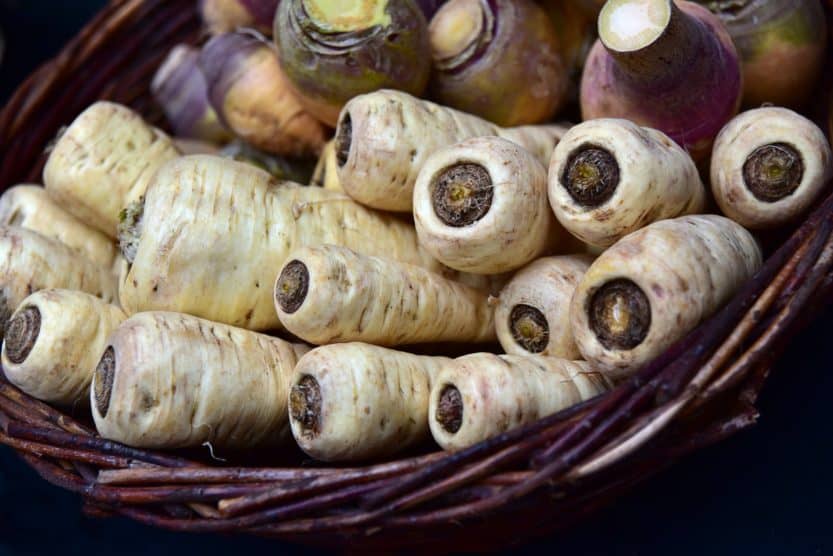
Parsnips are a delightful and underappreciated fall garden vegetable that offer a unique and delicious flavor profile. These root vegetables are closely related to carrots and share a similar appearance, but with a distinct, slightly sweet and nutty taste. Parsnips are an excellent source of vitamins C and K, as well as minerals like potassium and manganese. They also contain compounds called phenolic acids, which may have antioxidant properties. In the fall garden, parsnips thrive in the cooler temperatures and can even tolerate light frosts.
To grow parsnips successfully, sow the seeds directly in the ground in late summer or early fall, and be sure to provide the plants with well-draining, deep soil to accommodate their long, tapered roots. Whether roasted, mashed, or added to soups and stews, parsnips are a versatile and nutritious addition to any autumn harvest.
Peas

Peas are a classic fall garden crop that offer a sweet, tender, and nutrient-dense addition to any autumn harvest. This member of the legume family is an excellent source of vitamins C and K, as well as minerals like iron and magnesium. Peas also contain compounds called phytochemicals, which may have anti-inflammatory and antioxidant properties. In the fall garden, peas thrive in the cooler temperatures and can even tolerate light frosts.
To grow peas successfully, sow the seeds directly in the ground in late summer or early fall, and be sure to provide the plants with well-draining soil and ample support for their climbing vines. Whether enjoyed raw, steamed, or added to soups and stews, peas are a versatile and delicious addition to any autumn meal. With their impressive nutritional profile and their ability to flourish in the fall garden, peas are a must-have for any gardener who loves to experiment with a variety of fresh, seasonal produce.
Potatoes

Potatoes are a versatile and nutrient-dense staple that thrive in the cool, crisp weather of the fall season. This underground tuber is a powerhouse of essential vitamins, minerals, and complex carbohydrates, making it a must-have for any health-conscious gardener. Potatoes are an excellent source of vitamins C and B6, as well as minerals like potassium and magnesium. They also contain compounds called antioxidants, which may help to protect the body from oxidative stress.
In the fall garden, potatoes can be planted in late summer or early fall, and they will continue to grow and produce a bountiful harvest as the temperatures drop. To ensure a successful potato crop, be sure to provide the plants with well-draining soil and ample space, and protect them from any unexpected frosts or freezes. Whether roasted, mashed, or incorporated into soups and stews, potatoes are a versatile and nutritious addition to any autumn meal.
Radishes
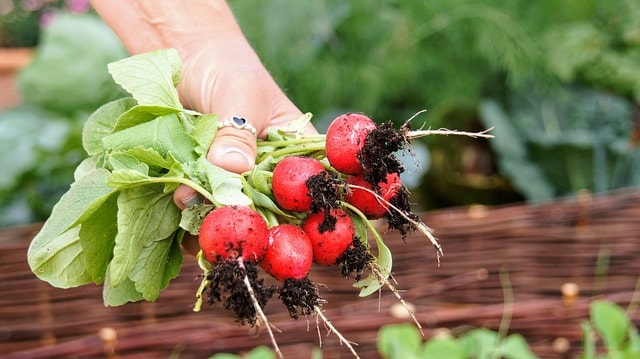
Radishes are a crisp and peppery fall garden vegetable that offer a unique and flavorful addition to any autumn harvest. This member of the brassica family is an excellent source of vitamins C and B6, as well as minerals like potassium and magnesium. Radishes also contain compounds called glucosinolates, which may have anti-cancer properties. In the fall garden, radishes thrive in the cooler temperatures and can even tolerate light frosts.
To grow radishes successfully, sow the seeds directly in the ground in late summer or early fall, and be sure to provide the plants with well-draining soil and ample space. Whether enjoyed raw in salads, roasted as a side dish, or pickled for a tangy condiment, radishes are a versatile and nutritious addition to any autumn meal.
Rutabagas

Rutabagas are a unique and often overlooked fall garden vegetable that deserve a place in every autumn harvest. This member of the brassica family is prized for its distinctive, turnip-like appearance and its sweet, earthy flavor. Rutabagas are an excellent source of vitamins C and B6, as well as minerals like potassium and manganese. They also contain compounds called glucosinolates, which may have anti-cancer properties. In the fall garden, rutabagas thrive in the cool, crisp weather and can even tolerate light frosts.
To grow rutabagas successfully, sow the seeds directly in the ground in late summer or early fall, and be sure to provide the plants with well-draining soil and ample space. Whether roasted, mashed, or added to soups and stews, rutabagas are a versatile and nutritious addition to any autumn harvest. With their unique flavor profile and their ability to flourish in the fall garden, rutabagas are a hidden gem that every gardener should consider adding to their autumn bounty.
Spinach
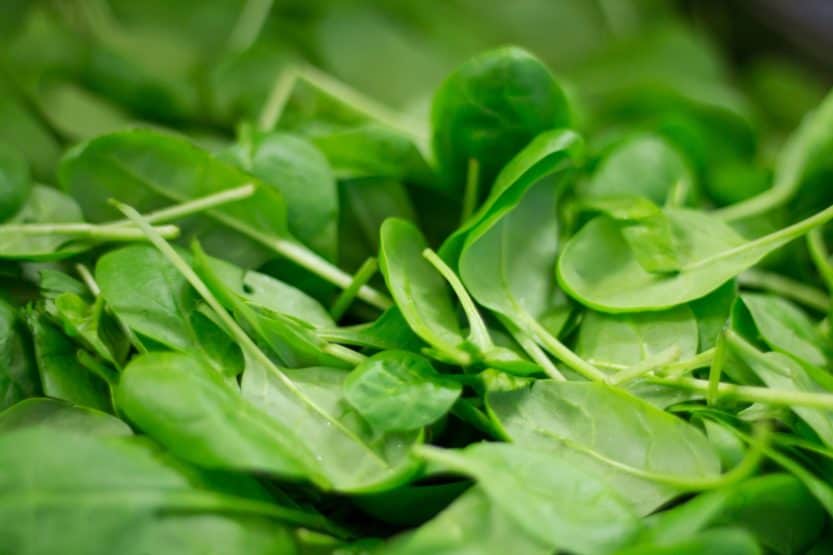
Spinach is a nutrient-dense powerhouse that thrives in the cool, crisp weather of the fall season. This leafy green is not only a culinary staple but also a rich source of essential vitamins, minerals, and antioxidants. Spinach is an excellent source of vitamins A, C, and K, as well as minerals like iron, calcium, and magnesium. It also contains compounds called carotenoids, which may have anti-inflammatory and anti-cancer properties.
In the fall garden, spinach can be sown directly in the ground in late summer or early fall, and it will continue to grow and produce a bountiful harvest as the temperatures drop. To ensure a successful spinach crop, be sure to provide the plants with well-draining soil and ample space, and protect them from any unexpected frosts or freezes. Whether enjoyed raw in salads, sautéed as a side dish, or incorporated into soups and stews, spinach is a versatile and nutritious addition to any autumn meal. With its impressive nutritional profile and its ability to thrive in the fall garden, spinach is a must-have for any health-conscious gardener.
Turnips
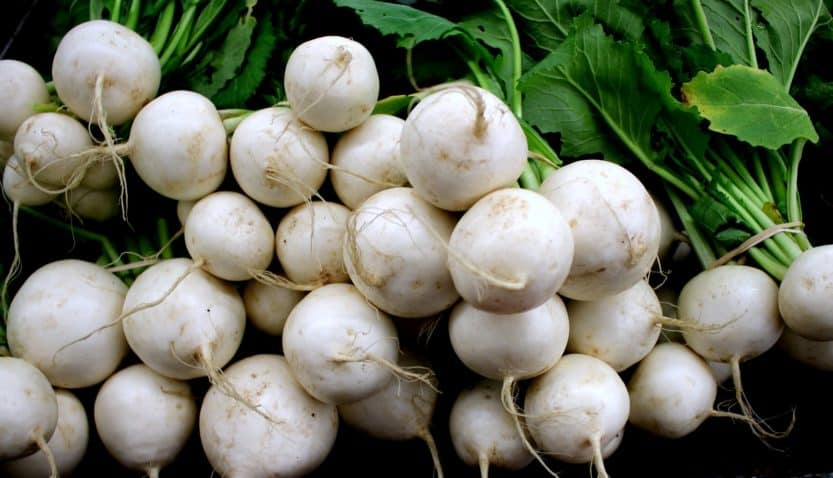
Turnips are a versatile and underappreciated fall garden vegetable that offer a unique and delicious flavor profile. These root vegetables are prized for their crisp, slightly sweet flesh and their peppery greens, both of which are packed with essential vitamins and minerals. Turnips are an excellent source of vitamins C and K, as well as minerals like potassium and calcium. They also contain compounds called glucosinolates, which may have anti-cancer properties.
In the fall garden, turnips thrive in the cooler temperatures and can even tolerate light frosts. To grow turnips successfully, sow the seeds directly in the ground in late summer or early fall, and be sure to provide the plants with well-draining soil and ample space. Whether roasted, mashed, or added to soups and stews, turnips are a versatile and nutritious addition to any autumn harvest.
Winter Squash
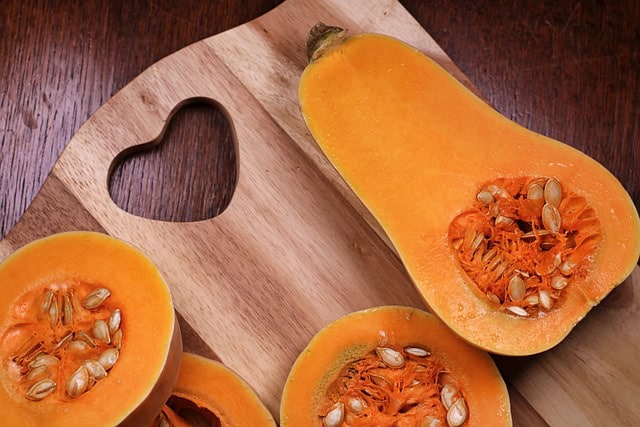
Winter squash is a fall garden staple that offers a rich, creamy, and nutrient-dense addition to any autumn harvest. This diverse group of vegetables, which includes varieties like butternut, acorn, and spaghetti squash, is prized for its ability to store well and provide a bountiful supply of fresh, seasonal produce throughout the cooler months. Winter squash is an excellent source of vitamins A and C, as well as minerals like potassium and magnesium. It also contains compounds called carotenoids, which may have antioxidant and anti-inflammatory properties. In the fall garden, winter squash thrives in the cooler temperatures and can even tolerate light frosts.
To grow winter squash successfully, sow the seeds directly in the ground in late spring or early summer, and be sure to provide the plants with well-draining soil and ample space to accommodate their sprawling vines. Whether roasted, pureed, or incorporated into soups and pies, winter squash is a versatile and delicious addition to any autumn meal.
Yellow Squash
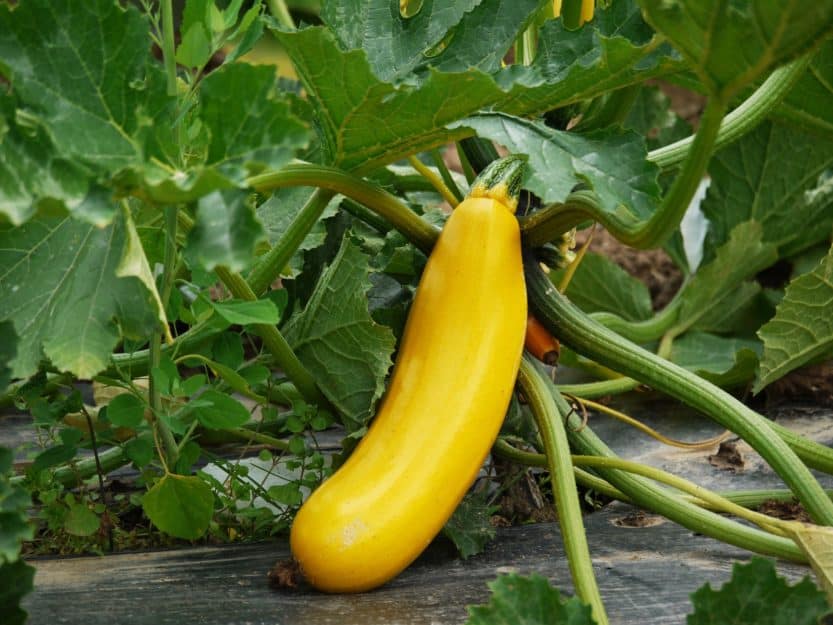
Yellow squash is a vibrant and versatile fall garden vegetable that offers a delightful addition to any autumn harvest. This member of the cucurbit family is prized for its bright, golden hue and its tender, mild-flavored flesh. Yellow squash is an excellent source of vitamins A and C, as well as minerals like potassium and manganese. It also contains compounds called carotenoids, which may have antioxidant and anti-inflammatory properties. In the fall garden, yellow squash thrives in the cooler temperatures and can even tolerate light frosts.
To grow yellow squash successfully, sow the seeds directly in the ground in late spring or early summer, and be sure to provide the plants with well-draining soil and ample space to accommodate their sprawling vines. Whether sautéed, grilled, or incorporated into soups and casseroles, yellow squash is a versatile and nutritious addition to any autumn meal. With its vibrant color, its impressive nutritional profile, and its ability to flourish in the fall garden, yellow squash is a must-have for any gardener who loves to experiment with a variety of fresh, seasonal produce.
Zucchini
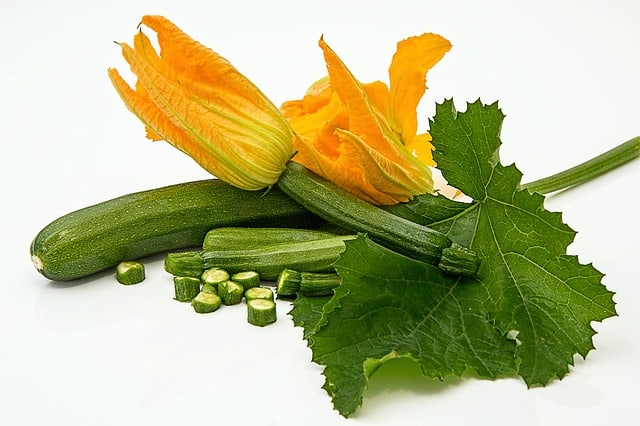
Zucchini is a beloved and prolific fall garden vegetable that offers a versatile and nutrient-dense addition to any autumn harvest. This member of the cucurbit family is prized for its tender, mild-flavored flesh and its ability to be prepared in a variety of ways. Zucchini is an excellent source of vitamins A and C, as well as minerals like potassium and manganese. It also contains compounds called carotenoids, which may have antioxidant and anti-inflammatory properties. In the fall garden, zucchini thrives in the cooler temperatures and can even tolerate light frosts.
To grow zucchini successfully, sow the seeds directly in the ground in late spring or early summer, and be sure to provide the plants with well-draining soil and ample space to accommodate their sprawling vines. Whether grilled, sautéed, or incorporated into baked goods, zucchini is a versatile and nutritious addition to any autumn meal. With its impressive nutritional profile and its ability to flourish in the fall garden, zucchini is a must-have for any gardener who loves to experiment with a variety of fresh, seasonal produce.





